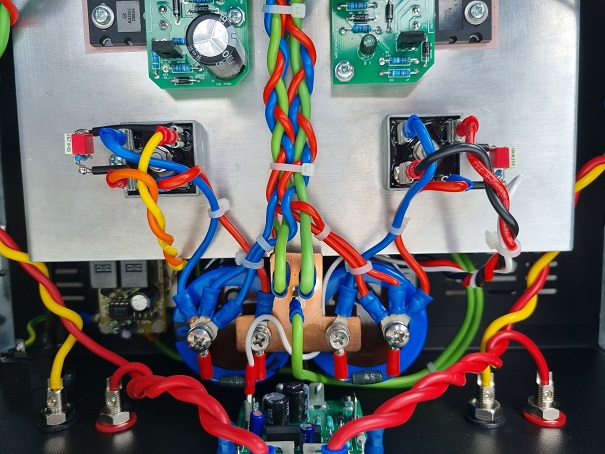Updated with new material 7th January 2019
This set of c. 70 slides is the culmination of my experience over a period of about 25 years building power amplifiers and preamplifiers. I first started out in audio around 1975 or 76 as a teenager. Some of my creations were reasonably quiet – through pure luck – and others hummed and hissed horribly. Later, my skills improved dramatically, and especially so after reading one of Henry Ott’s books back in about 1988/89 whilst developing a very high-resolution Digital Panel Indicator for industrial applications at the company I worked for. I then left DIY audio for about 15 years (career, family etc), returning to the subject again in 2005, having forgotten a lot of my practical skills. The path from electromagnetic theory expounded on numerous websites, application notes and posts on various web forums to building quiet amplifiers every time is not easy and requires a bit of practice. The underlying theory can be extremely complex (think Maxwell’s equations), however, with some effort and focus you can quickly master the basics. This set of slides focuses on unbalanced interconnects (aka ‘single-ended’) that use the standard RCA phono connectors, since this is where problems mostly arise.
When it comes to humming and hissing amplifiers, good practical advice is scarce and misguided opinions on the subject easy to find.
This presentation (which will remain a work in progress and be expanded from time to time) is designed to get audio constructors up and running quickly both in the construction/planning phase, but also debugging. It will hopefully also serve as a useful reference for anyone wanting to know a bit more about EMC as applied to amplifiers. One important thing about EMC: you will never stop learning, and finding new problems to solve.
Here is DIYaudio member Ilimzn’s excellent posts on the subject that I gathered into a single document:
ilimzn’s Excellent Posts on Ground Loops
Here is some additional material:
Amplifier PCB Design Guidlines for Minimizing Hum
Some practical guidance offered to a builder on diyAudio:
More Notes On Amplifier Hum Problems
For some practical examples of low noise amplifiers using these techniques, see the nx-Amplifier and sx-Amplifier on www.hifisonix.com
Here are some commercial products that use the techniques described in the presentation: www.ovationhifidelity.com
The picture below shows the internal wiring of one of the two nx-Amplifiers I built a few years ago with zero noise or hum problems. The power wiring is tightly bundled, and small signal wiring is kept well away from the transformer and other power wiring. On the PSU PCB, strict attention to the capacitor ‘T’ connection and ‘star’ ground return result in an exceptionally quiet amplifier.
Finally here is a YouTube video of HOW NOT TO DEAL WITH GROUND LOOPS. What is really disconcerting about this is that if you type ‘Ground Loops’ into Google, this will probably be the first reference that comes up on the list.
All the basic safety rules about earthing [grounding] by using a ‘ground lifter’ are completely broken and the noise problem has actually not been solved – they have gone around the problem and made the product completely unsafe in the process – and especially so since this is on a tube amplifier.
The question to ask when dealing with a potential safety fault is ‘What would happen if the live wire came loose and touched on the input jack, or any other metalwork on the product without the safety earth[ground] connected?’ If the answer is ‘it would be at the live potential’ don’t do it!
Never, ever, use a ground lifter in the manner shown in the YouTube video to get rid of hum – its plain dangerous and illegal. Period.


Leave a Reply